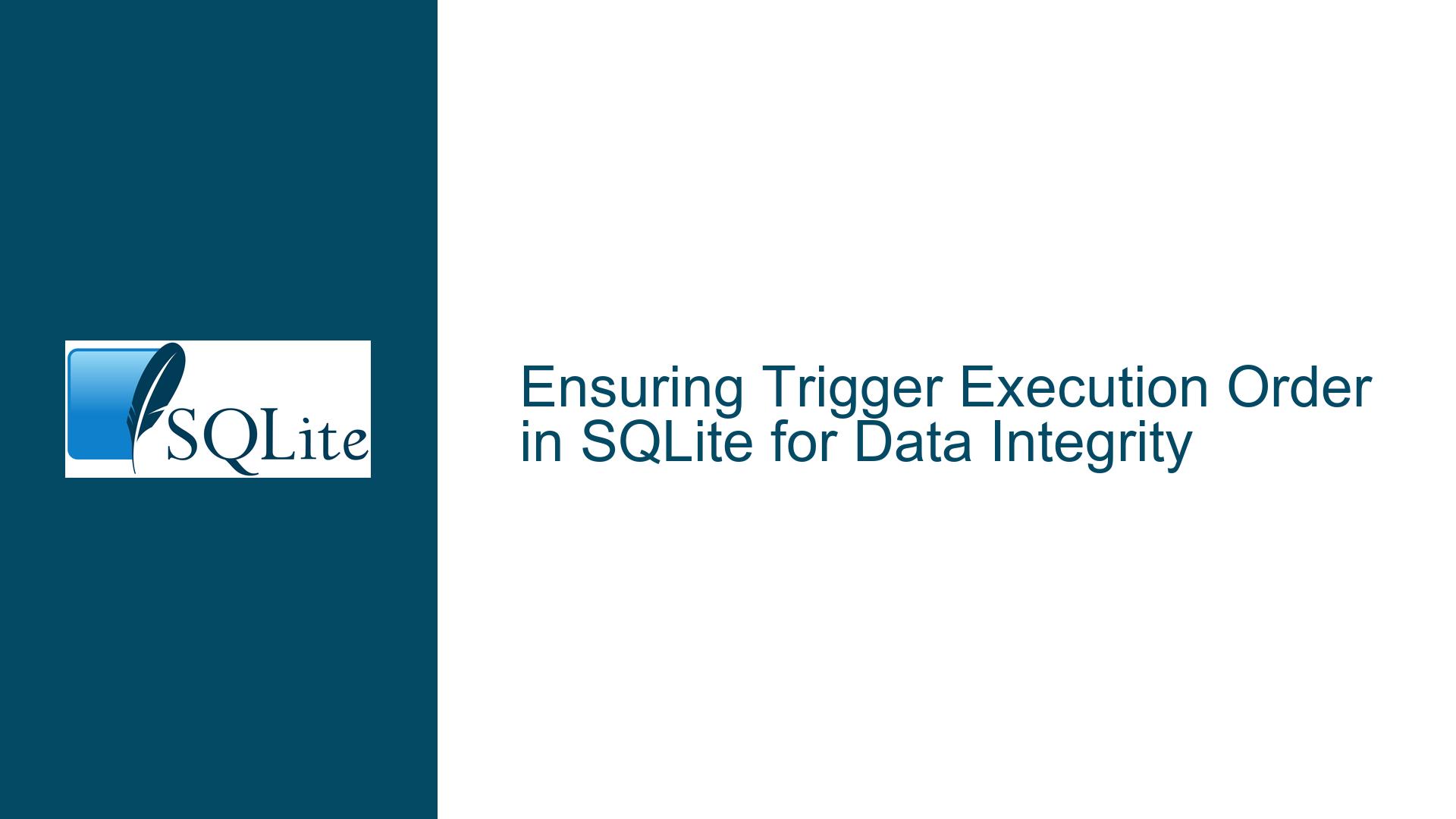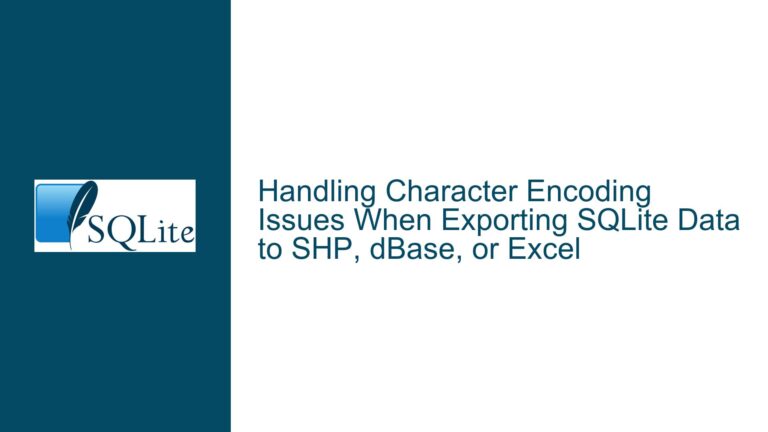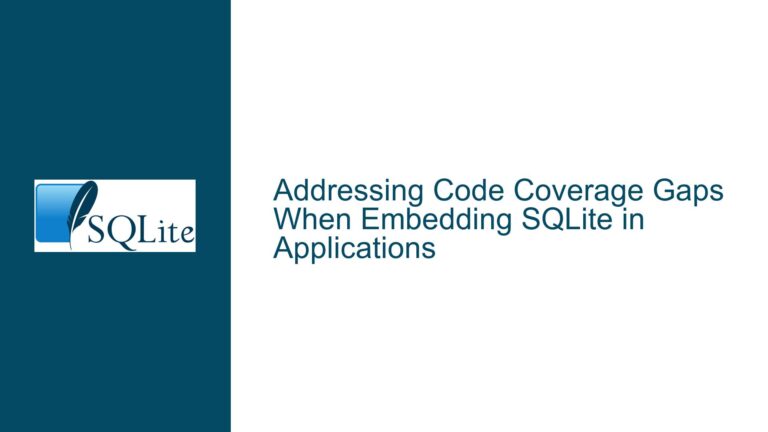Ensuring Trigger Execution Order in SQLite for Data Integrity
Understanding the Need for Ordered Trigger Execution in SQLite
In SQLite, triggers are powerful tools that allow developers to automate actions in response to specific database events, such as inserts, updates, or deletes. However, when multiple triggers are defined on the same table and event, ensuring their execution order becomes critical, especially when the outcome of one trigger depends on the results of another. This issue is particularly relevant in scenarios where data integrity and business logic must be enforced across multiple tables or records.
For instance, consider a scenario where one trigger is responsible for populating null values in a record based on business rules, while another trigger uses the fully populated record to update or insert data into a related table. If the second trigger executes before the first, it may operate on incomplete or incorrect data, leading to inconsistencies or errors in the database. This situation underscores the importance of controlling the order in which triggers execute.
SQLite does not provide a built-in mechanism to explicitly define the execution order of triggers. Instead, triggers are executed in the order they were created, with the most recently created trigger executing first (Last-In-First-Out, or LIFO order). While this behavior is consistent in most cases, it is not officially documented and could potentially change in future versions of SQLite. This lack of guaranteed consistency poses a challenge for developers who need to ensure that their triggers execute in a specific sequence.
To address this challenge, developers must adopt strategies that either enforce a specific execution order or make triggers resilient to variations in execution sequence. This involves understanding the underlying mechanisms of SQLite triggers, identifying potential pitfalls, and implementing solutions that ensure data integrity regardless of the order in which triggers are executed.
Exploring the Causes of Unpredictable Trigger Execution Order
The unpredictability of trigger execution order in SQLite stems from several factors, including the database’s design philosophy, the absence of explicit ordering mechanisms, and the reliance on internal implementation details. Understanding these causes is essential for developing effective strategies to manage trigger execution.
One of the primary reasons for this unpredictability is SQLite’s lightweight and minimalist design. Unlike more complex database systems, SQLite prioritizes simplicity and efficiency, which means it does not include advanced features for managing trigger execution order. This design choice allows SQLite to remain fast and resource-efficient but places the burden of managing trigger dependencies on the developer.
Another factor contributing to the unpredictability is the lack of documentation regarding trigger execution order. While empirical observations suggest that triggers execute in LIFO order, this behavior is not officially guaranteed. As a result, developers cannot rely on this order remaining consistent across different versions of SQLite or in edge cases that may arise during execution.
Additionally, the interdependencies between triggers can complicate matters. For example, if Trigger A depends on the results of Trigger B, but Trigger B itself depends on the results of Trigger C, the execution order becomes critical. Without a mechanism to enforce this order, the database may end up in an inconsistent state, with some triggers operating on incomplete or incorrect data.
Finally, the dynamic nature of database operations can exacerbate the issue. In a live system, multiple triggers may be created, modified, or dropped over time, further complicating the task of maintaining a consistent execution order. This dynamic environment requires developers to adopt robust strategies that can adapt to changes while ensuring data integrity.
Implementing Robust Solutions for Trigger Execution Order
To address the challenges posed by unpredictable trigger execution order, developers can adopt several strategies that ensure data integrity and enforce business logic, even in the absence of explicit ordering mechanisms. These strategies range from consolidating multiple triggers into a single trigger to implementing conditional logic within triggers.
One effective approach is to consolidate multiple triggers into a single trigger that performs all necessary operations in a specific sequence. By combining the logic of multiple triggers into a single BEGIN/END block, developers can ensure that operations are executed in the desired order. For example, a single AFTER INSERT trigger can first populate null values in the record and then use the fully populated record to update or insert data into a related table. This approach eliminates the need to rely on the execution order of multiple triggers and ensures that all operations are performed sequentially.
Another strategy is to implement conditional logic within triggers to make them resilient to variations in execution order. For instance, a trigger that updates a related table can include a condition to check whether the necessary fields in the original table have been populated before performing the update. If the fields are still null, the trigger can either skip the operation or use default values to proceed. This approach ensures that the trigger operates correctly regardless of whether it executes before or after other triggers.
In cases where consolidating triggers or implementing conditional logic is not feasible, developers can consider using a separate program or script to process the data after it has been inserted into the database. This program can enforce the desired sequence of operations and handle any dependencies between triggers. While this approach introduces an additional layer of complexity, it provides greater flexibility and control over the data processing logic.
Finally, developers should consider maintaining a clear separation between raw data and processed data. By leaving the original table untouched and using triggers or external programs to create new tables with processed data, developers can simplify debugging and ensure a clear understanding of which data was automatically calculated and which was manually entered. This approach also makes it easier to modify the processing logic in the future without affecting the original data.
By adopting these strategies, developers can overcome the limitations of SQLite’s trigger execution order and ensure that their databases operate reliably and efficiently, even in complex scenarios with multiple interdependent triggers.






